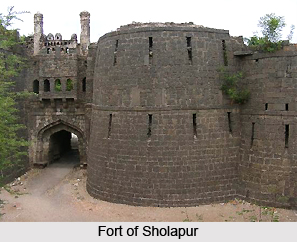 Isamail Adil Shah was the ruler of the region of Bijapur who ruled from 1510 to 1534 and spend a majority of his time expanding his territory through numerous conflicts. His brief period of rule enabled his strengthening of his empire in the region of Deccan.
Isamail Adil Shah was the ruler of the region of Bijapur who ruled from 1510 to 1534 and spend a majority of his time expanding his territory through numerous conflicts. His brief period of rule enabled his strengthening of his empire in the region of Deccan.
Early Years of Isamail Adil Shah
Isamail Adil Shah succeeded Yusuf Adil Shah to the throne of Bijapur. He was the son of Yusuf Adil Shah. The minister of Isamail Shah, Kamal Khan used to supervise the internal affairs of the state. Historical records state that the young king Isamail was imprisoned by Kamal Khan, who also made an attempt to make a coup. However, this attempt was thwarted by Punji Khatun, who was Isamail`s mother. She had conspired and made a counter plan, ultimately stabbing Kamal Khan to his death inside the premises of the palace. Following his death, Ismail Khan, who was his son tried to arrest Punji Khatun and her son Isamail Adil Shah by laying a siege around the royal palace. Despite his efforts, he failed since he was stopped and killed at the entrance of the palace. Thereafter, Isamail Adil Shah began to administer his kingdom with the aide of his mother Punji Khatun. Isamail was devoted to the faith of the Shia and announced that Shia would be the universal faith of the state.
Conquest of Bidar
Isamail Adil Shah had invaded the region of Bidar, particularly the area of Kasim-Barid. Kasim Barid, with the intervention of the Muslim emperors of Berar, Golconda and Ahmednagar invaded Bijapur. Isamail was capable of protecting his kingdom and in this battle, Mahmud Shah, belong to Bidar and Ahmed, his son were captured as prisoners. Isamail Shah`s sister Bibi Shah was wedded to Ahmed Shah of Ahmednagar, thus establishing friendly relationship with him.
The rule of Isamail Adil Shah was mainly peaceful, prior to his attack against Nizam Shah of Ahmednagar, who was said to have non-cooperated with Ashad Khan in his fight against Vijayanagar`s Timur. Nizam Shah was discontented since he was not granted his promised dowry, which was to be offered to him at the event of his marriage with the sister of Isamail Shah. The fort of Sholapur was never granted to him as promised. Therefore, to avenge this, he made an attempt to forcefully acquire the fort of Sholapur. He did not succeed since Isamail was able to capture the fort with the help of forty elephants.
Establishing Adil Shah Dynasty
When Isamail had conquered Bidar, Isamail had ensured that his general Asad Khan contributed his efforts to check the actions of Kutubshah. Amir Burad was defeated while he was drunk. Amir Birad, consequently, granted the areas of Bidar and Humnabad as a treaty to Isamail. Isamail then approached Bidar Fort and ascended the throne. Finally, Isamail Shah was satisfied with Amir Birad and returned him the fort of Sholapur.
Final Days of Isamail Adil Shah
While he campaigned against the region of Golconda, he had fallen ill and died in 1534 A.D. Following his demise of his son Mallu was made the emperor. Eventually, Ibrahim Adil Shah I was announced the ruler.



















